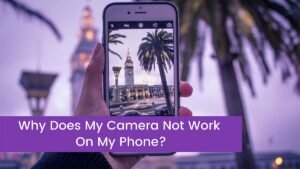The world of digital media is constantly evolving. Every day, budding and seasoned entrepreneurs open e-commerce stores, hoping to get a slice of the market worth $5.7 trillion. But with an estimated 12 to 24 million stores globally, how do you make yours competitive enough to be noticed?
One answer is through product photography.
From new tools for editing to high-speed cameras and even drones, there’s always a way to get your product pitch just right.
Why Product Photography is Important
Product photography is more important than ever because it helps to increase conversions on your website. It’s part of optimizing your product pages. Aside from putting in descriptive information, most buyers would want to see actual pictures.
Studies have shown that people retain information longer when concepts are paired with images. It helps them make sense of the content. This is because 90% of the brain processes visual images.
Best Practices for Product Photography
Using high-quality product images can increase sales significantly. Here are five ways to master product photography and benefit from it.
1. Use the Right Camera Gear and Settings
The right camera gear is key to creating a compelling image. If you don’t have a DSLR or mirrorless camera, it’s time to get one. You can use your phone for product photography. However, if you want professional-looking and high-quality pictures, it’s best to invest in some professional equipment.
Other camera gear you will need include:
- Tripod. It will keep your hands free while taking photos of products at different angles or from overhead positions.
- Lens. For product photography, the idea is to get more details. For this, a lens with an aperture of f/7 to f/11 will help maintain the elements while keeping the shot in focus.
2. Use Cutting Edge Editing Tools
No matter how beautifully and expertly you’ve taken the shot, you still need to edit your images. Editing tools help you fix the lighting, color, and contrast of your images. You may also need to use a background remover to highlight the product.
This process is essential when uploading photos on the product pages. As much as possible, you’d want them to focus on the products and not the background.
3. Maximize Natural Lighting
Natural light is the best type of lighting for product photography. The fact that it’s free and easier to get than artificial light is a great thing, but you still be mindful.
Natural light can be unpredictable and change throughout the day, so you should schedule shoots early. Choose locations where you can get the maximum amount of natural light.
If this isn’t possible, there’s nothing wrong with using artificial lighting. When shooting product photography on location, there must be enough light available for your subject and camera setup.
4. Fix the Setup
When doing product photography, planning is important. Aside from the time and location of your shoot, you also have to think about your set-up. Ensure the camera and everything else you need for the shoot is ready.
Shooting for still images can be pretty straightforward. However, some preparation may be necessary when telling a story about your product—for example, adding a bubbling effect for a soda.
5. Take Different Angles
Customers appreciate it if they can visualize the product and see it in totality before purchasing them. Remember, 75% of buyers rely on product photos, and 22% will return the products simply because it isn’t what they expected.
That’s why taking shots of the products from various angles is essential. Show the front, sides, and even the back. If there are details that deserve to be highlighted, capture them as well. You want your buyers to visualize what they’re buying from you.
Key Takeaways
Product photography is all about storytelling, but it’s also about getting the proper lighting, angles, timing, and more to make your product stand out.
Always keep your audience in mind and ensure their expectations are met. Creating an engaging story with each photo you take is also important. So start brainstorming ways to tell your brand’s story with these best practices.
- Use the right camera gear
- Go for cutting-edge editing tools
- Natural lighting is best
- Product set-up matters
- Capture images from different angles




